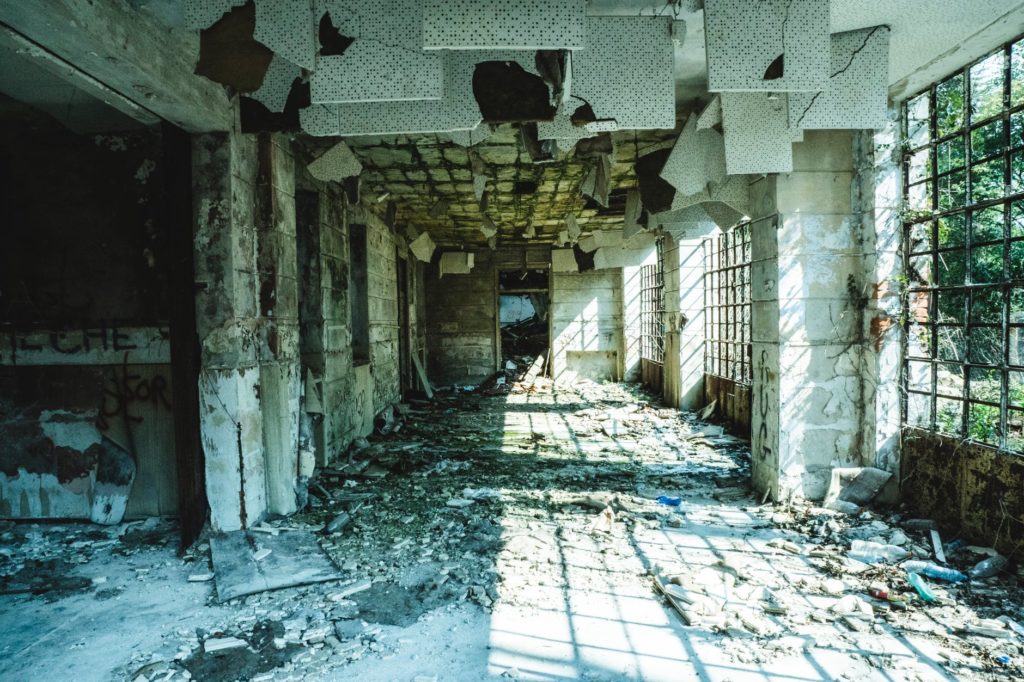“The Greenest Building Is The One That Is Already Built” – Architect Carl Elefante
Undoubtedly, today we can build structures that are extraordinarily sustainable. Once constructed, these amazing structures recycle water, conserve energy, manage waste, and do much more in helping conserve our planet’s natural resources. Simply put, today we are building structures that demand almost no carbon footprint to operate on a yearly basis. BUT again, how much ever efficient these buildings are, they still demand raw materials (like bricks, wood, metal, gypsum, paint, glass, plastics, etc.) for their construction. And those raw materials must be processed, transported, packed, delivered on site and assembled. Furthermore, all that demands a lot of energy and resources.
This is precisely why preserving and repurposing old buildings is a much more sustainable option than building a new one. But can an old building be a green building? Let’s find out.
Why Preservation Of Old Buildings Is The Most Efficient Option
Old buildings consumed the same massive list of resources and energy to assemble them years ago, now the work is already done, the materials are already in place. Tearing them down now and constructing super green structures will not only add tons of debris to the landfill but also throw away a lot of Embodied Energy. Now, what is this embodied energy?
Simply put, embodied energy is the total energy involved in the extraction, processing, manufacturing, and delivery of the building materials to the construction site. Typically, it involves the energy to:


- Demolish the existing structure
- Pull away the waste from the original building
- Extract raw materials
- Manufacture building materials
- Transport building materials to the construction site
- Assemble the physical structure
According to a study by the National Trust for Historic Preservation:
- An existing old 50,000 square foot building, signifies 80 million BTUs of embodied energy
- Destruction of such a building would result in 4,000 tons of waste
- If only 40% of materials are retained, it would take 65 years for a new green, energy-efficient building to recover the embodied energy lost.
With so much on stake, preservation of old buildings conclusively is the most efficient option of all!
Can An Old Building Be A Green Building?


Now that we know the level of embodied energy involved in the construction of buildings, one thing is quite clear – Tearing down all structures that aren’t explicitly sustainable is not the best thing for the environment. In addition to this, old buildings also hold cultural and historical relevance, they act as a root which ties us to the past. Old residences, offices, banks, schools, office buildings, may not find a mention in the history textbooks, but their vernacular styles make them totally worthy of preservation. To understand how to best include these old buildings within our sustainable agenda, it is first significant to look at their present environmental impact compared to most infrastructure found today.
According to the National Institute of Building Sciences’ Whole Building Design Guide, “historic buildings are inherently sustainable.” Adaptive reuse of old structures not only ensures the maximum use of material lifespans but also reduces waste. These claims are corroborated by life cycle analysis (LCA) tests, demonstrating that “reusing older buildings result in immediate and lasting environmental benefits.”
While these structures aren’t as energy efficient as new high-tech ones, LCAs findings say performance is not overpoweringly compromised, as many existing old buildings already have sustainable features. With the absence of significant climate control technology during the time of their construction, the form and construction materials used in many old buildings were fundamentally efficient, i.e. they trapped heat in the winter and released heat in the summer. Many excellent features in old buildings include thick walls, shutters, overhangs, awnings, and high ceilings for air circulation and light admittance. Hence, these sustainable features are retained when rehabilitating and renovating them for modern use.
Therefore, with their waste reducing benefits, and their current level of performance, the best way to make old buildings sustainable is to put them to use.
IGBC Rating For Existing Homes
Existing buildings cover a very hefty footprint of the built environment; thus, it is vital to find ways to reduce their water and energy consumption and improve their overall operational efficiency. Green practices in the already built buildings can help address national urgencies like energy efficiency, water efficiency, reduction in the usage of fossil fuel, waste management and conservation of natural resources. In addition to that, two other most important aspect of greening the existing buildings is enhancing the health, and well-being of its occupants.
Green rating for existing buildings can have great benefits, both tangible and intangible. The tangible ones include Energy savings (of 15-30 %) and Water savings (of 15-30%). On the other hand, Enhanced air quality, health, and well-being of occupants, higher productivity, lower absenteeism and attrition, and demonstration of commitment towards the environmental stewardship and corporate social responsibility are the intangible ones.
Read the quick rundown on the key highlights of the IGBC Rating For Existing Homes.
Final Thoughts
Restoring and putting the old building to reuse is by the most sustainable option for cities to grow. So, the first step to building green is to restore and efficiently utilize our existing building stock. Then, make room for new green buildings that are highly sustainable, efficient, and smartly designed.
Curated by editor at Wienerberger India
Like this story? Or have something to share? Write to us: gosmartbricks@gmail.com or connect with us on Facebook and Twitter.










